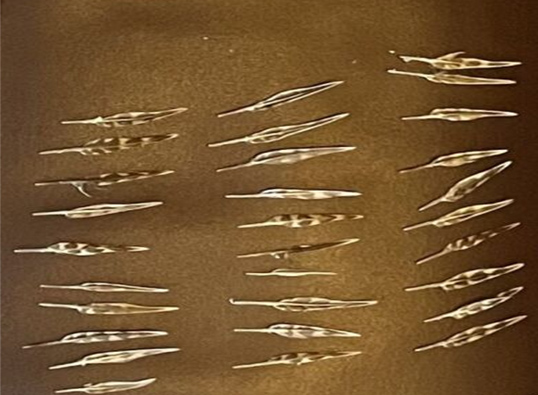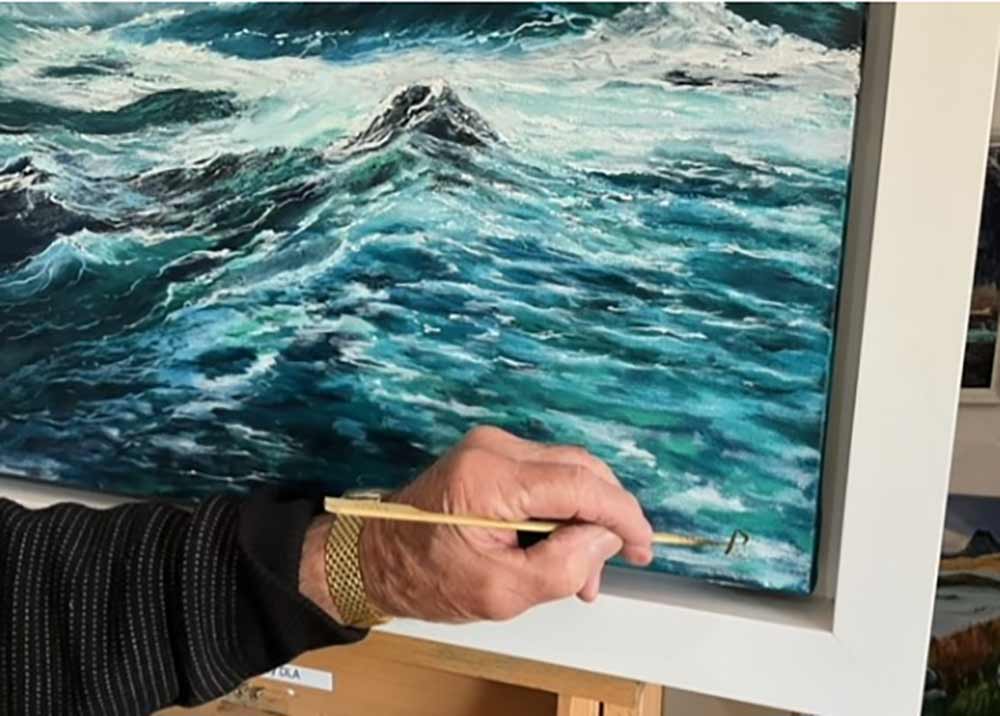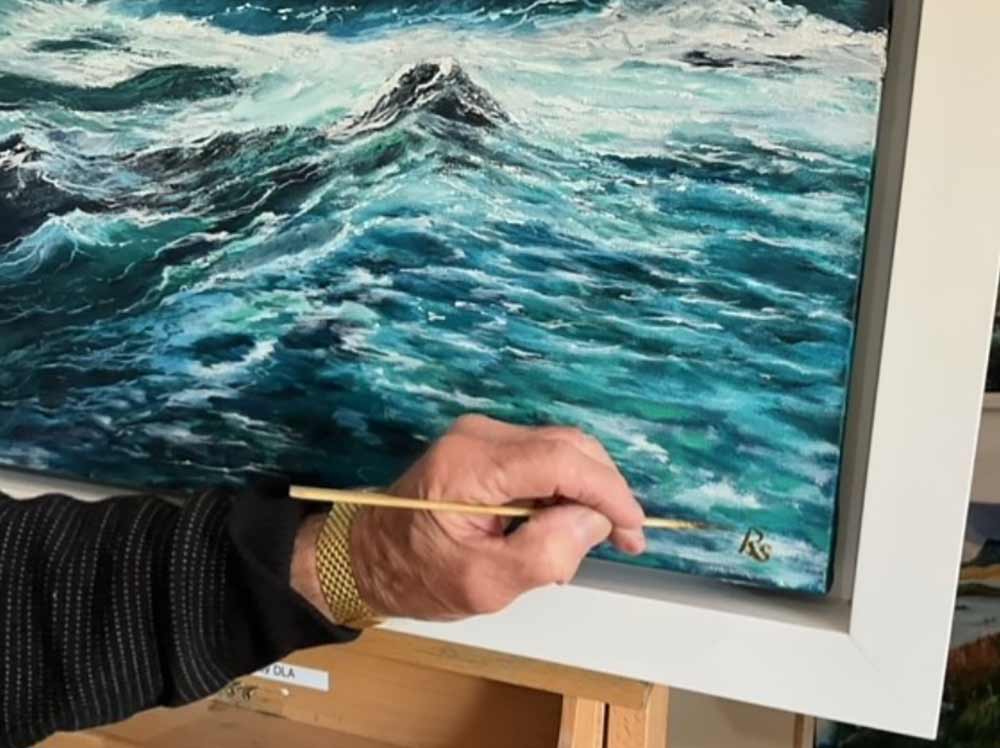(SCOLOPAX RUSTICOLA), yes this is a key component part (nib) of historic and traditional British writing instrument

The tiny Woodcock pin-feathers are found on the leading edge of a bird’s wings. Only two such feathers occur on any mature bird – only one on each wing. Their length varies widely, from under 20 to 39 mm.
Pin-feather writing and painting. The history of the art is somewhat obscure on this subject, but it is known that, in the XIX century, British and European painters and miniaturists frequently used woodcock pin-feathers. Some of them used Woodcock pin-feathers to paint on popular then ivory. In terms of bird’s anatomy, the pin-feathers are located on top of the very first primary of the leading edge of a wing. The woodcock is not unique in having a pin-feather, and in fact we have seen many specimens of a similar feathers from different bird species.
On the next page Artist Robin Souter (RS) is signing off one of his seascape’s paintings with our woodcock pin feather, directly from the author’s collection. Robin remarked: Over the last ten years with great help and encouragement of my friend Graham Morgan I understand the craft of painting slightly better and as any artist will acknowledge, “I wish I had known this 40 years ago”! There is so much wisdom available which sometimes can be unintentionally counter-productive and block creativity. It’s never too late and some of my work now gives me great pleasure.




Robin commented further: “I attached the woodcock feather to a used Marks and Spencer’s kebab stick first with eco stick and then a whip finish using fly fishing tying thread. This sits nicely in the hand at virtually no cost – hence a big hit with a Scotsman! I used acrylic ink for the demo, but don’t actually use this approach for signing my work. I like something very discrete so as not to distract from my work”.
